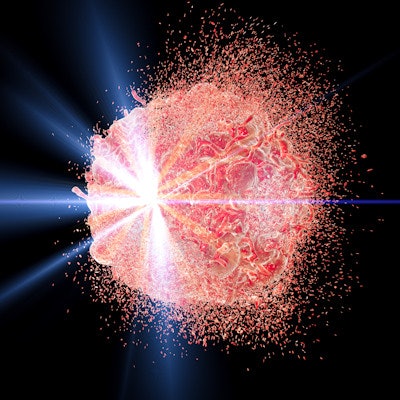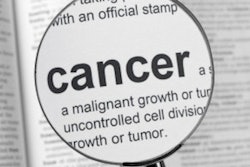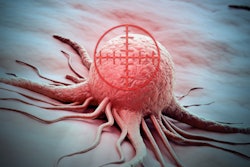
About 93% of nasopharyngeal carcinoma (NPC) survivors experience severe tooth wear due to hyposalivation caused by radiation treatments, according to a new study in the June 2020 issue of the Journal of Dentistry.
Dentists found severe wear on three times as many anterior teeth, specifically incisors, compared to those in the back of the mouth.
"NPC survivors as well as patients with [hyposalivation] should be monitored for tooth wear particularly on the anterior teeth," wrote the authors, led by Walter Y.H. Lam from the University of Hong Kong Faculty of Dentistry (J Dent, June 2020, Vol. 97).
Treatment at a cost
Radiotherapy is the primary treatment for nasopharyngeal carcinoma because NPC is highly radiosensitive and difficult to access surgically, due to its location. Those who undergo radiation treatments have good outcomes, with 10-year survival rates of 100% for patients with stage I cancer and approximately 87% for stage II, 76% for stage III, and 56% for stage IV. Unfortunately, radiation treatment in the head and neck region can damage the salivary glands, specifically the parotids, and cause hyposalivation, which puts patients at greater risk of tooth decay and erosion.
To investigate salivary factors that may be associated with tooth wear in these survivors, clinicians used the Exact Tooth Wear Index to assess the teeth. A tooth that had dentine loss on more than one-third of its buccal, occlusal, or lingual surfaces was graded as having severe wear. Data, including age, number of teeth, flow rate/buffering capacity, and pH of stimulated whole saliva (SWS) and stimulated parotid saliva (SPS), also were collected.
The study included 68 people who had received radiotherapy for nasopharyngeal carcinoma at least five years ago. The mean age of the participants was 60.
The researchers examined 697 anterior and 686 posterior teeth. Severe wear was found in 288 anterior and 83 posterior teeth of 63 (93%) of the participants. About 42% of anterior teeth showed severe wear, with the incisal surfaces of central incisors affected the most. Approximately 15% of posterior teeth showed severe wear, the group found.
Furthermore, approximately 71% of patients had low or no buffering capacity of SPS, and about 44% had low or no buffering capacity of SWS. Multiple regression analyses showed that the SWS flow rate was linked to the number of anterior teeth with severe wear, the authors wrote.
Nevertheless, the study had some limitations; for example, it did not include the survivors' baseline status of tooth wear. This information would have helped demonstrate the changes in the patients' teeth before and after radiation therapy. However, the prevalence of tooth wear was much higher than in adults the same age who didn't survive cancer. Adults who are about 60 with no history of cancer or radiation treatment have a prevalence of severe tooth wear of less than 15%, the authors noted.
A need for monitoring
Tooth wear is a significant dental problem among survivors of nasopharyngeal carcinoma, so clinicians should closely monitor them, according to the authors.
"We have demonstrated how reduced salivary function as a consequence of radiotherapy has long-term impact on dental health and in turn needs for dental care," they wrote.




















